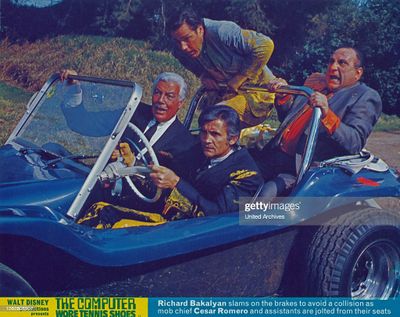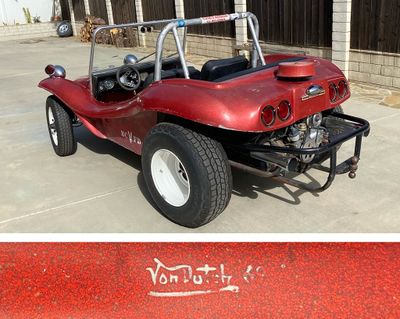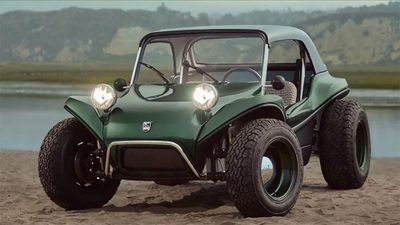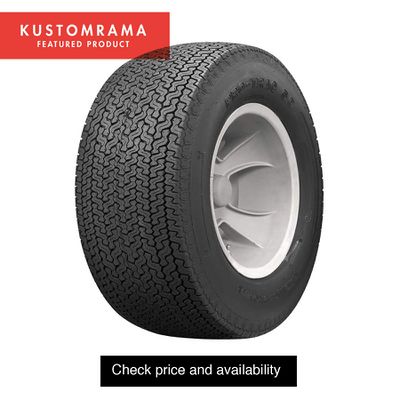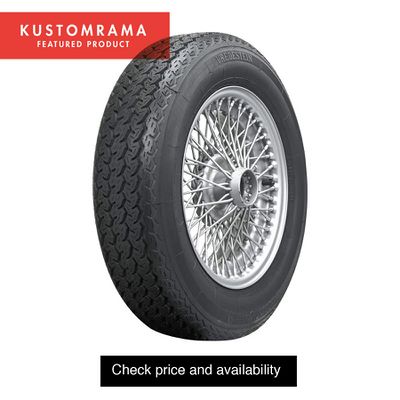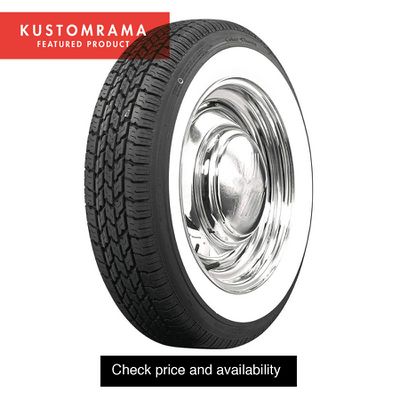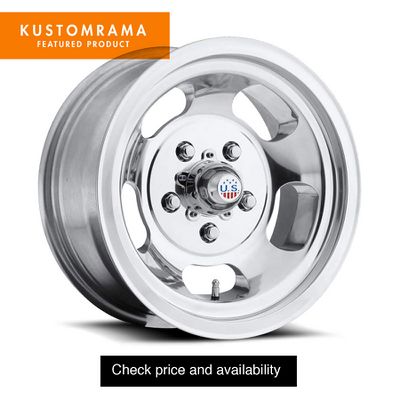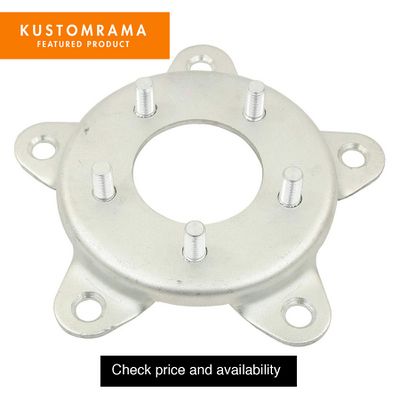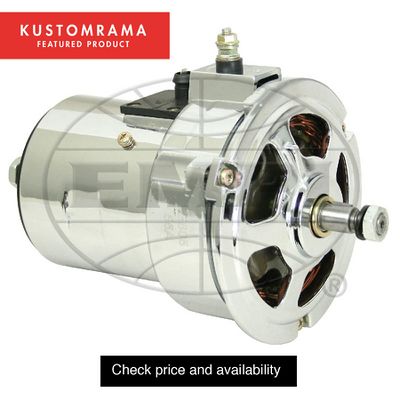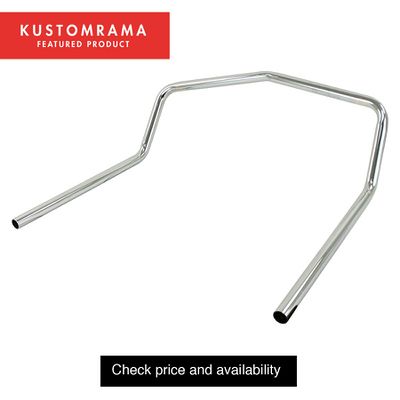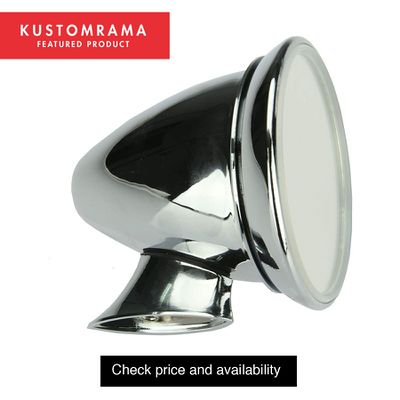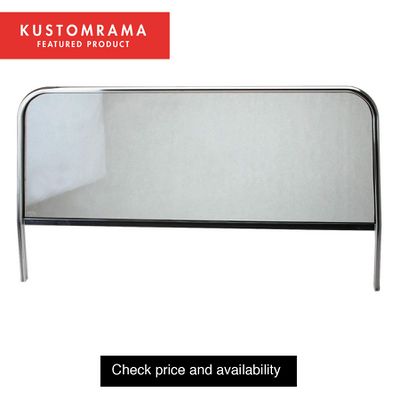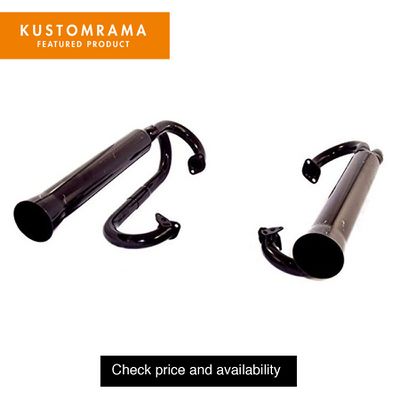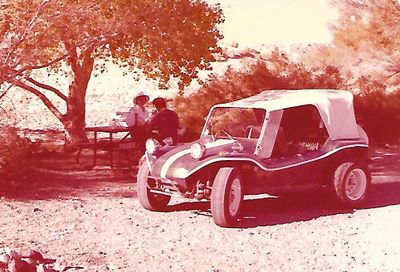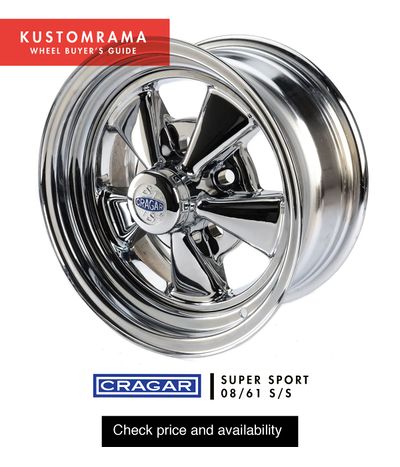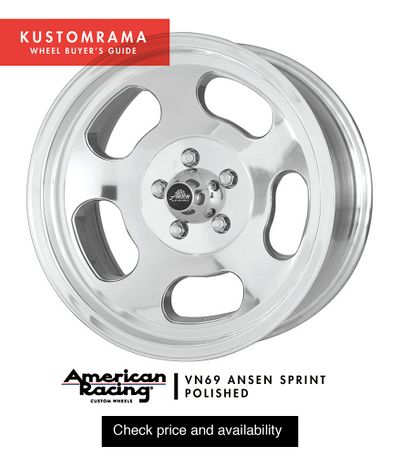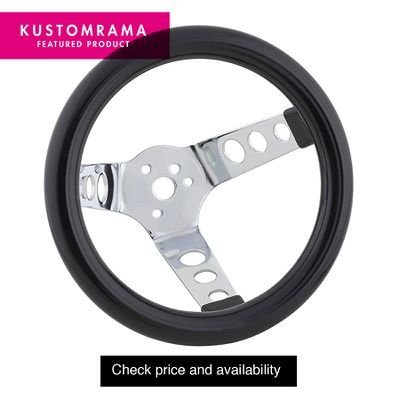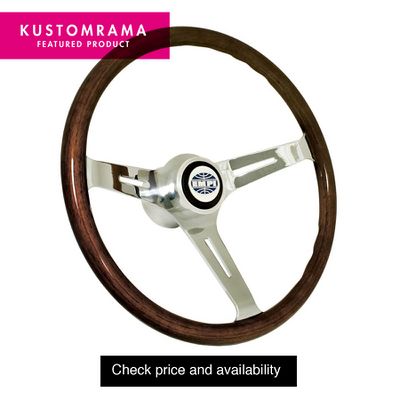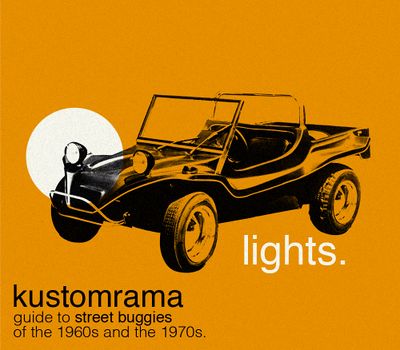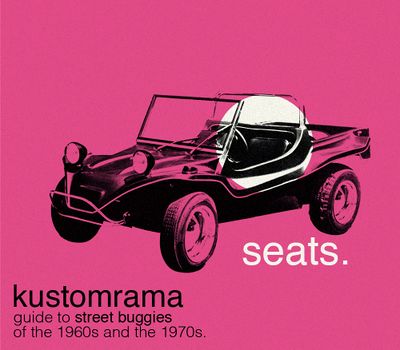
Buggies – New Generation of Street Roadsters! That's what
Hot Rod Magazine said on the cover of their
September 1970 issue, where three buggies were featured. This guide is made to showcase a style of buggies that has the authentic
1960s and
1970s look and style. Hopefully, the guide will spark an interest among all of you car aficionados for a snappy, fun open-air roadster.
Street buggies are the main focus of this guide, rather than off-road buggies. No matter how you twist, wiggle, and turn things around. A dune buggy is a huge part of the
California car culture, maybe even the biggest.

After building and driving American cars, hot rods, customs, and gassers his whole life, the author of this guide,
Henrik Forss, felt it was time for some air-cooled fun. "
I took a deep plunge into the dune buggy history and came to love it immediately. Pure, simple, fun with a personalized attitude, and very affordable. I'm hooked on air-cooled fun forever. Can't wait to build more buggies. Here’s my first one. Initially built in Pasadena, California in 1970. I adjusted it a little and enjoy it wholeheartedly. Street buggies for life"
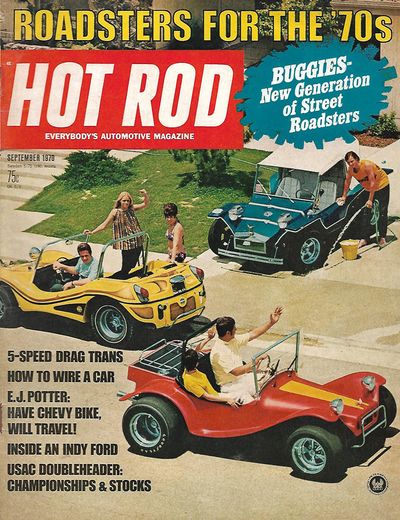
Fun fun fun in the sun. The cover of
Hot Rod September 1970 pretty much sums up what it was all about. Family fun in the sun. Wide, chromed wheels...smiling faces, and lots of bright colors. By then, the
dune buggy craze was already raging nationwide, and there seemed to be no stopping it. To many, a
dune buggy/
beach buggy is the ultimate expression of the
Southern Californian lifestyle. Do what you want, when and where you want it. This was especially the case during the
1960s when the
dune buggy craze started, a time when you took them out on the sand dunes for a fun day in the sun with friends.

The
Meyers Manx was indeed the original dune buggy and the first one to manufacture and distribute the fiberglass bodies on a large scale. When Bruce lost a court case on his own patent, the market quickly opened up, thus gaining the reputation as being the most imitated car in the world.

Before they were called dune buggies, people called them water pumpers. Older vehicles were often stripped of their bodies and got the chassis shortened. Sometimes bucket seats were installed, sometimes not, and the same goes with a roll cage and seat belts. This was wild, free dune buggy fun in its very early years.

This is the El Burro. Not especially beautiful, but we are confident it was a whole lot of fun. Running hubcaps on the sand dunes was apparently a-ok back then

It is July of
1963, and
Motor Trend is testing the
Empi Sportster. This is three years before
Bruce Meyers will release his better-looking body in fiberglass. But make no mistake, the buggy craze started for many thanks to this magazine and its inviting and exciting cover.
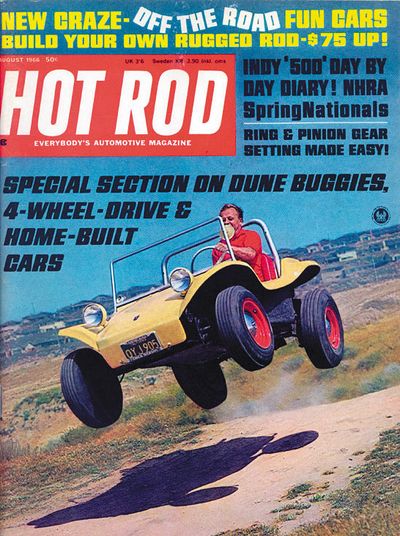
This is where the fun starts! If you were into cars and fun in the
1960s and saw this
Meyers Manx on the cover of
Hot Rod Magazine August 1966 in the newsstand, chances are you wanted a buggy asap. It is indeed a very captivating image.
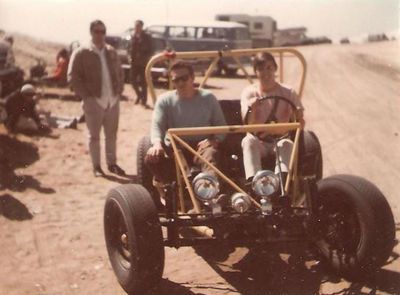
This picture was taken in
1968 at
Pismo Beach in
California. The very beginning of the dune buggy craze and just before the fiberglass frenzy started.

The patent that Bruce Meyers lost led to a huge market for manufacturers of similar dune buggies

Already in
1968 - the buggies were dubbed the world's most imitated car. The dune buggy craze was incredible and may very well be the biggest car culture movement there ever was.
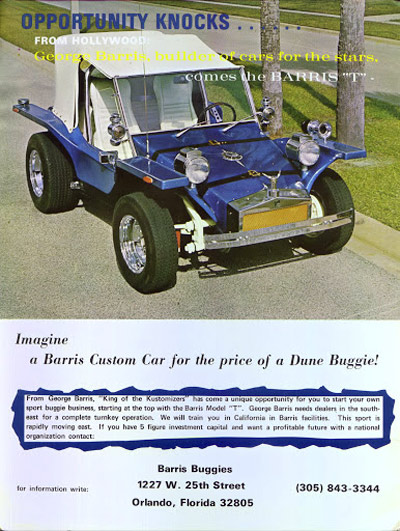
"
Opportunity knocks..."
George Barris of
Barris Kustom fame saw an opportunity and jumped on the bandwagon. His buggies became popular thanks to massive promotion, and they quickly appeared in both TV series as well as movies. Also, several car magazine journalists had them as their daily drivers in and around
Hollywood back then. "
Imagine a Barris Custom for the price of a Dune Buggie," the ad reads.
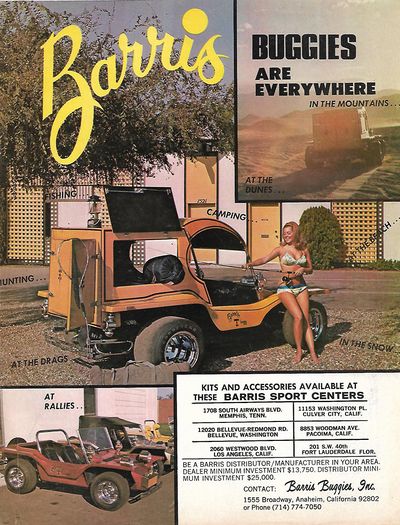
"
Buggies are everywhere!"
Barris had retailers and builders set up nationwide to accommodate the new craze of buggies. The "street roadsters" of the
1970s.

Sure enough,
George Barris wasn't the only customizer that started making dune buggies. Famous customizer
Dean Jeffries joined in and made a line of different bodies like this
Kyote II.

Kellison may be most known for the gorgeous J-bodied sports car, all made of fiberglass. But, outside of
Sacramento, he also made dune buggies. He sold them by the pound.
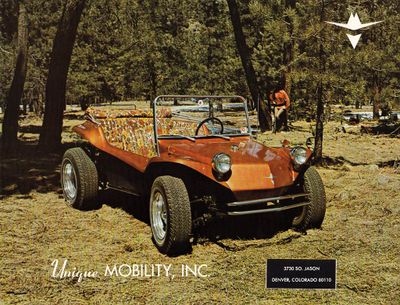
Not only did the manufacturers promote the dune buggy for beach and sand dune use, but in a quite unexpected fashion, here they are promoting one in the wilderness.
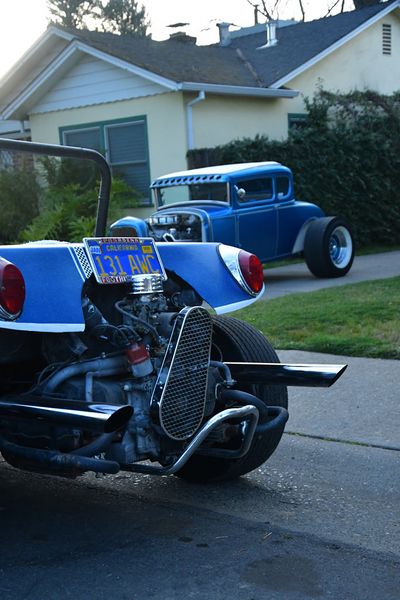
In
Southern California, where it all started, the dune buggies were known as the street rods of the
1970s. No matter the brand, make, or model..the car culture in
California has always been fun and interesting.

Several magazines popped up, focused on the dune buggy lifestyle and culture. Check out that Oldsmobile. It is driven by famous actor
James Garner and it has a fiberglass body. He raced it with success, even down in Mexico.

Dune/Sports/Fun Buggies & Snowmobile.
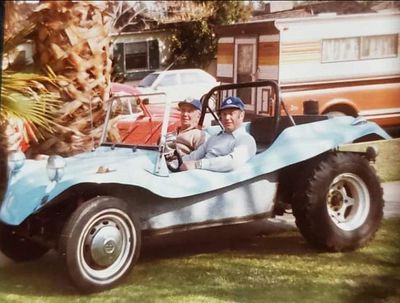
What is the dune buggy craze all about? To the fine gentlemen in the Safari,
1971 was a good year. Monster tires in the rear and stock beetle rims and hubcaps up front. They sure seem relaxed, and that is what the dune buggy scene is all about. Relax - enjoy.
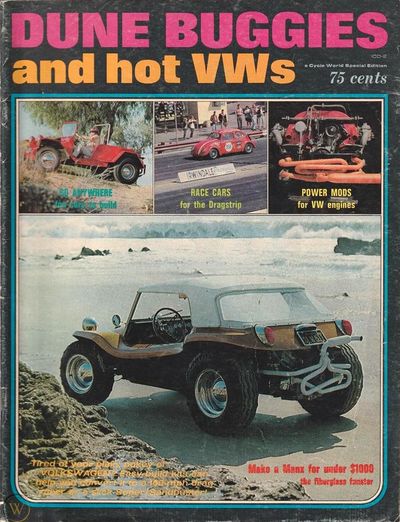
The fiberglass fun continues. With these tantalizing pictures and a text saying you can build a buggy for under $1000, what would you do?

EMPI has been in the game since day one and still is.
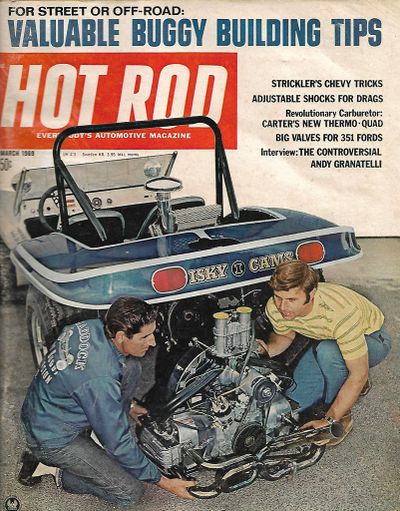
"
Valuable Buggy Building Tips" Not only were the dune buggies fun, but many times they were also fast, very fast. Both on road tracks and the drag strip. The very lightweight body made sure that a lot of AC Cobra, Corvette, and Jaguar owners had bad days back then.

A multipurpose vehicle. The buggy could also work as a tow car at the drags. Here seen at the
Winternationals.
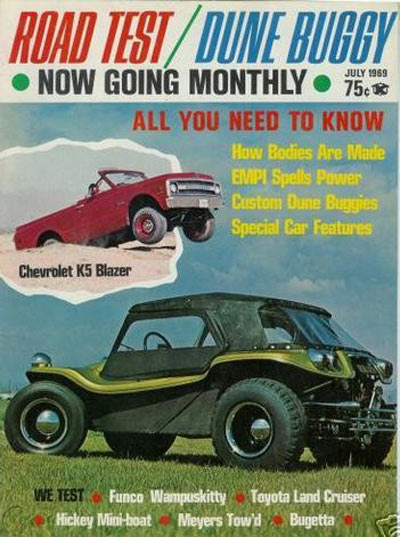
Check out the dual taillights. Right off the bat, the dune buggies started getting customized.

Dune buggy customs? Absolutely. Whatever had been done previously to American-made cars, customs, and hot rods was now done to dune buggies.

The Claim Jumper. Here is a
Joe Andersen custom-painted buggy. Taken circa
1969, this photo popped up for sale on
eBay.

"
Order 'Em from Sears" The car culture and hobby immediately got a whole lot easier. To own or/and build a personalized street roadster had never been cheaper than this.
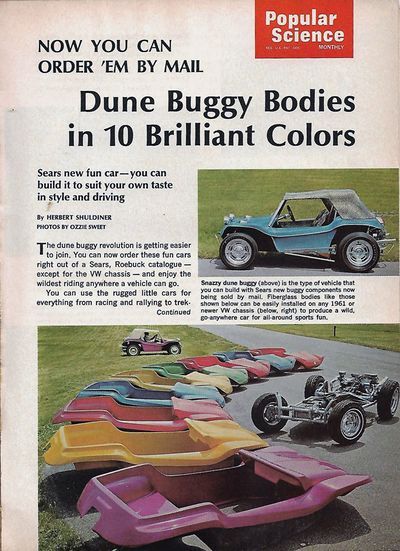
Order your own dune buggy straight from a catalog and get it delivered. Any color you want. How easy, how fun, how perfect.

Well, it was the
1960s and
70s, after all...A little more free, a little more fun.
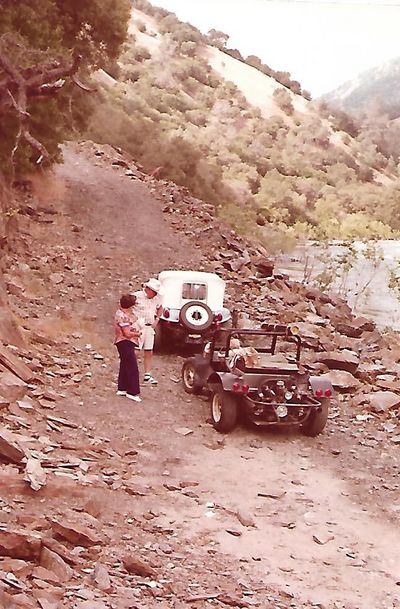
When
Stowe Webber built this buggy in
Pasadena,
California 1970, he equipped it with a CB radio so that he and his wife could go on adventures with friends all over the nation and stay in touch with other dune buggy desperados.
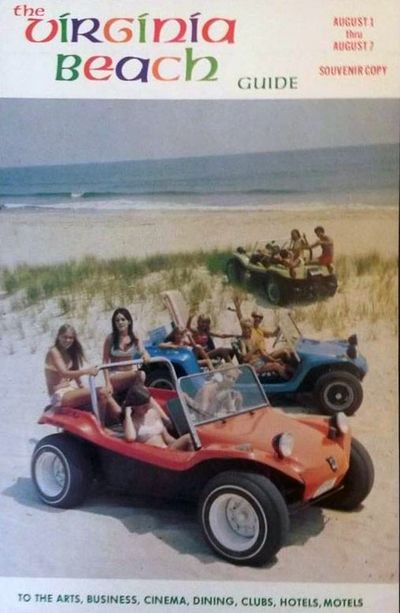
The dune buggy craze, albeit most popular in
California, was quickly spread all over. Not only in the
United States but all over the world.
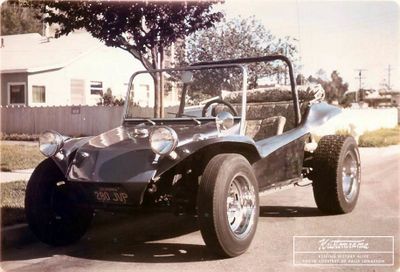
Another photo of Kalle's dune buggy. "
It is by far the easiest car I have ever sold," he told
Henrik Forss. "
One day in 1975, I parked it at a gas station with a for sale sign and my phone number. As I got home, I already had a voicemail. A guy bought it right away for $800. Talk about the good old days!" Kalle went on to work for
Chop Foose. Photo courtesy of
Kalle Jonasson.

In
Sweden, and in
Wheels Magazine, the dune buggy craze was evident. This was, however, in
1982, so about 15 years after the craze hit the USA. It took a while to catch on, but during the
1980s,
Swedish-based companies started selling dune buggy bodies and kits. It was presented as the cheapest car you can build, and "
it is already painted."
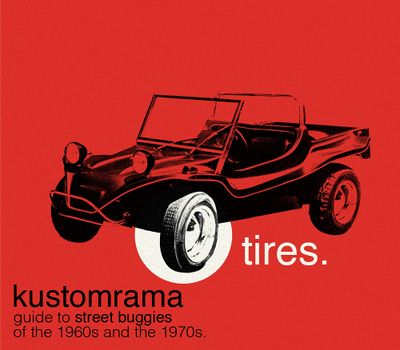
Go wide with pride! The wheels of any car have huge importance. To obtain a nostalgic look on your buggy, a safe bet is to go wide with pride. Wide up front and very wide in the rear. It will give the buggy attitude and acceptance.

Obviously those tires have to be mounted on something. A very good, and extremely classic look that we today view as nostalgic is actually all of the below brands and styles. A five-spoke wheel like the classic
Cragar S/S or
American Racing Torq Thrust II is never a bad idea.

When the buggy craze hit, it hit hard. Wherever there was money to be made, it was being made. Commercials, TV appearances, and like here - promotion for fancy fashion. Notice the
Cragar S/S wheels.

Available on the market since
1965, the original
American Racing Torq Thrust “D” model originally targeted Corvettes with disc brakes and was only available in 15x6 and 15x7 sizes. The modern version, which still is available today, was released in the
the 1980s, and it has more sizes to offer. The wheel is available in
gray,
black, and
chrome.
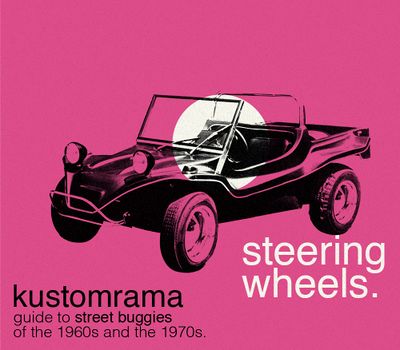
Attitude comes first, practicality last. Here are two different styles of steering wheels that both look good. While a deep dish small wheel with chrome spokes is nothing but cool, the wooden steering wheel gives it a little more sporty look and feel. They are so easy to change, so why not buy both and change when it feels right?

A buggy usually has a sparkly paint job, often thanks to the flake gel coat from the factory. So, if you have a killer set of fat wheels all chromed out – it makes sense to chrome everything else as well. Right?

There are many styles to choose between when it comes to exhaust. Chromed or not, one pipe or four? Changing an exhaust on a VW is easy as a breeze and you’ll have it done within the hour. Have fun with it. What looks good on YOUR buggy?
Guides, Reviews & Recommendations
Buggies – New Generation of Street Roadsters! That's what Hot Rod Magazine said on the cover of their September 1970 issue, where three buggies were featured. They were colorful, had wide mag wheels and the people in the cars all seemed to enjoy life very much. By then, the dune buggy craze was already raging nationwide, and there seemed to be no stopping it. To many, a dune buggy/beach buggy is the ultimate expression of the Southern Californian lifestyle. Do what you want, when and where you want it. This was especially the case during the 1960s when the dune buggy craze started, a time when you took them out on the sand dunes for a fun day in the sun with friends.
Today we recognize Bruce Meyers as the main influence to popularize the well-known dune buggy body. His first fiberglass-bodied Meyers Manx products were built during 1963-64, and when 1964 was over, he built the 12 first fiberglass dune buggy's placed on shortened VW beetle platforms. Bruce, an avid surfer, was familiar with using fiberglass and built the first buggies at home in his Newport Beach, California garage. When Bruce introduced his Meyers Manx, it was a huge sensation, and it came to change the car culture forever. He has been quoted saying; "It was all about having fun. And that is the simple truth about dune buggies. Fun in the sun."
Let us not forget that people on the sand dunes of California had been using buggies on the beach way before this. They called them water pumpers, and quite often, it was simply a car with the body removed that had two bucket seats mounted. The chassis was often shortened. To fill the gap between those vehicles and the fiberglass version, Daniel Rettig from Oceana, California had built his own version of a buggy as early as 1958. Rettig's buggy was based on a shortened VW beetle pan. Hilder "Tiny" Thompson built his El Burro version already in 1960. After that EMPI of Los Angeles followed suit and built their Sportsters, and the ball had just started rolling. None of these had fiberglass bodies, however, and certainly not the beautiful body Bruce Meyers created.
This article will focus on the traditional dune buggy body that started the whole craze. When Meyers started selling his buggies, he received a lot of media attention. Special dune buggy magazines and clubs quickly popped up. Hot Rod Magazine, for instance, wrote a huge article in their September 1970 issue explaining that the dune buggy was the street rod of the seventies. VW Trend wrote an article on buggies in their very first issue in 1967. Not only were dune buggies used on the beach, but as street roadsters, they quickly got into racing on the tracks and, thanks to their low weight and hopped-up engines, often beat competitors driving more exclusive and far more expensive cars such as Porsche's, Cobras and Ferrari's. But hey, that’s another story.
The World's Most Imitated Car
Competitors quickly arose, and soon the market was swamped with other companies that basically just copied the Bruce Myer design. Barris Kustoms started making their own version, as did Dick Dean, Dean Jeffries and Kellison, just to name a few. This was largely possible due to Bruce Meyers losing a court battle over the patent on the body he created. The market was left wide open for hungry competitors to take a bite of. It is said that Bruce built around 5000 Meyers Manx dune buggies, and 20 times as many were produced and sold by competitors back then.
The famous dune buggy design is alive and very well today with a large number of manufacturers all over the world. Nonetheless, one of them is the famous Meyers Manx that is still being produced under new ownership. There are a plethora of producers of everything from aftermarket parts to bodies and complete running buggies, and it’ll be hard to visit a beach town - anywhere in the world without seeing a dune buggy these days.
This guide is made to showcase a style of buggies that has the authentic 1960s and 1970s look and style. Hopefully, the guide will spark an interest among all of you car aficionados for a snappy, fun open-air roadster. Street buggies are the main focus of this guide, rather than off-road buggies. No matter how you twist, wiggle, and turn things around. A dune buggy is a huge part of the California car culture, maybe even the biggest.
That Style
Most buggies are manufactured very brightly and colorful with Metalflake in the gel coat, and with such a simple body design, all details are very important. Wheels and tires in particular. In this guide, we will list a variety of tires and wheels that will look good on your buggy if you are looking for the correct 1960s-1970s look. We will also list several other important details, such as a good set of fiberglass bucket seats, a chromed roll bar, plus lots of chrome on the very visible engine. Here are some good ways to personalize your buggy, where truly the sky is the limit.
Affiliate Disclosure: Some of the links on this page are affiliate links. If you click on these links and make a purchase, we may earn a commission at no additional cost to you. As an eBay Partner Network affiliate, we earn from qualifying purchases. This helps support our work in bringing you valuable content.
















